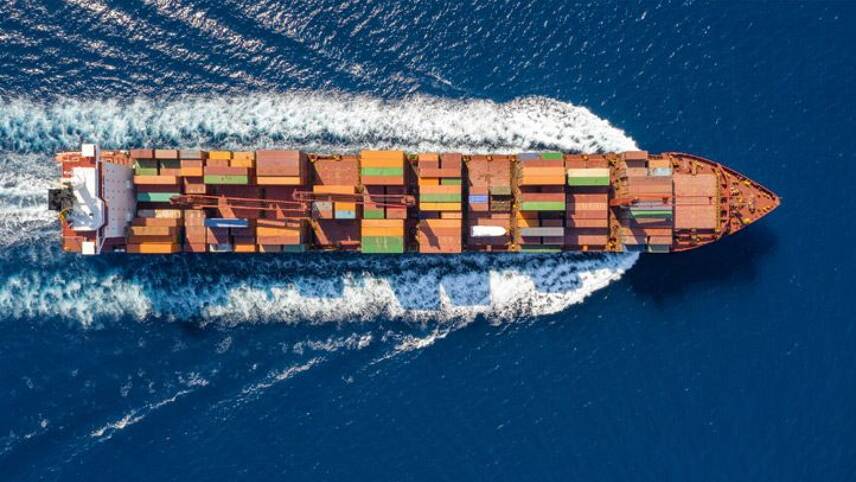Register for free and continue reading
Join our growing army of changemakers and get unlimited access to our premium content

Like many other countries, Germany helps its exporters mitigate the risks of payment defaults by granting public guarantees for export credits. This means the government compensates exporters in case of non-payments, with a particular focus on countries with higher political risks, such as developing and emerging economies.
The government now plans to better align the scheme with its climate agenda, without however excluding fossil gas from the scheme entirely.
For that purpose, the government presented a draft classification scheme this week, which groups economic activities into three categories: a “green” one for climate-friendly technologies, a “white” one for neutral ones, and a “red” one for climate-damaging activities.
“Projects in the green category will receive easier and more attractive cover conditions in the future,” a spokesperson of the German Economy and Climate Ministry told EURACTIV.
The new classification scheme will apply to export credits for activities in the energy and transport sector, as well as certain key industries such as steel, aluminium, and some chemicals.
In a second step, the scheme will also use the same criteria for public guarantees to outgoing foreign investments by German companies, the ministry said.
Today (28 July), the ministry will start a public consultation on the proposed classification scheme, inviting business associations, NGOs, and researchers to present their views, with a view to finalising the scheme before the end of this year.
Mixed alignment with the EU’s own taxonomy
The classification scheme partly resembles the EU’s sustainable finance taxonomy, an EU-wide classification system grouping economic activities according to their contribution to a range of six climate and environmental objectives.
In the energy sector, the “green” category includes renewable energy, power storage, electricity and heating grids, as well as hydrogen production.
“When drafting the sector guidelines for export credit guarantees, it was essentially the EU taxonomy or the technical assessment criteria for a ‘significant contribution to climate protection’ contained therein that were used for a classification in the green category,” the ministry spokesperson said.
However, unlike the EU taxonomy, the “green” category does not include any activities related to nuclear power, which is explicitly excluded from the definition of “low-emission” power grids for grid infrastructure projects.
Furthermore, “in view of the fact that the EU taxonomy does not yet cover all economic activities, other international standards had to be additionally used as a guide for some sectors,” the spokesperson said.
Gas projects
While rules for the “white” category will remain unchanged, activities that fall under the “red” category will no longer be eligible for the export credit guarantee scheme. However, they can still continue if they can secure private financing.
Coal and oil projects, in the “red” category, will largely be excluded from credit guarantees. Some fossil gas projects, however, fall into the “white” category and can thus continue to be eligible for the scheme.
This would include, in “particular exceptional cases”, the exploitation of new gas fields, according to the proposal.
To be eligible for this, such projects must be necessary either for “national security” or “geostrategic security of supply interests” and also prove “compatibility with the 1.5-degree target and the avoidance of lock-in effects,” the proposal says.
The classification would be “oriented not only to the EU taxonomy but also, for example, to the ‘Net Zero by 2050’ scenario of the International Energy Agency (IEA),” the ministry spokesperson explained.
However, the IEA’s Net Zero by 2050 scenario includes the milestone of “no new oil and gas fields approved for development” as of 2021.
“It is reasonable to assume that only very few projects – if any – can meet these criteria,” said Felix Heilmann, policy fellow at Dezernat Zukunft, a think-tank. Speaking to EURACTIV, he said it was a positive step that projects will need to prove evidence-based fulfilment of the criteria.
Nevertheless, the potential eligibility of fossil gas projects has prompted criticism by environmentalists, who argue that too much leeway is left for such kinds of projects.
“When it comes to gas investments, it is now up to individual ministries to say ‘no’,” David Ryfisch, head of international climate policy at NGO Germanwatch, said in a statement. “That is not enough.”
“Criteria are announced without defining them,” he added. “It would be in the interest of the German government to clearly define these criteria and to exclude all other investments not only for coal and oil but also for gas.”
Jonathan Packroff, EurActiv.com
This article first appeared on EurActiv.com, an edie content partner


Please login or Register to leave a comment.